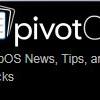By
News Reporter
‘Mission for the Future’ Challenge Seeks Innovations that Improve Quality of Life
SANTA CLARA, Calif., Sep. 1, 2021 — LG Electronics (LG) announces the launch of Mission for the Future, a global challenge competition for startups to identify innovative technologies and business ideas that pave the way to the future. This inaugural competition is hosted by the company’s new Silicon Valley-based innovation center,
link hidden, please login to view, a strategic team within LG working with startups and the entrepreneur communities to build new businesses and bring even more innovation from the outside into LG.
Mission for the Future is a nine-month annual challenge program created to seek the best ideas, concepts and businesses that will improve quality of life in a greener, smarter, healthier, more-connected future. Selected challenge entrants will begin working with the LG NOVA team on their business proposals within three to six months, leading up to the finalist selection process starting in March 2022.
Finalists of the challenge competition will get the opportunity to work with the LG NOVA team based in California to accelerate their growth and take their business to the next stage, potentially launching a new business with LG. The company intends to set aside up to USD 20 million to support finalists with investments, resources, funding for concept development and access to LG’s global infrastructure and supply chain to build joint businesses with LG.
Throughout the process, outstanding challenge participants with unique business ideas will have the opportunity to engage with LG and its partners and access corporate resources, mentorship and pilot programs to continue to grow their business.
The 2021-22 competition will spotlight innovations for technologically advanced lifestyles for the good of people, communities and the planet across five focus tracks:
Connected Health: Inventive approaches, access and devices to provide people with more control over their healthcare anytime and anywhere, thereby increasing the health and wellness of our population;
Energizing Mobility: New services, solutions and business ideas that will help scale the electric mobility infrastructure and catapult the use of electric power for vehicle and transportation forward;
Smart Lifestyles: Content, services, applications and technology that can be deployed in the connected home space, potentially leveraging LG’s ThinQ platform to streamline and improve how we live our daily lives;
The Metaverse: Innovations that will help build the next digital world and internet enabled by gaming, VR, AR and XR technologies, blockchain, digital avatars and more; and
Innovation for Impact: An open track for breakthrough or adjacent innovations aligned with LG’s philosophy of innovation for a better life that create positive impact on people, communities and the planet.
“The Mission for the Future challenge serves as LG NOVA’s first step towards outside-in innovation for LG, as it collaborates with innovators and startups all around the world to grow ideas and build businesses together,” said Dr. Sokwoo Rhee, senior vice president for innovation at LG Electronics and head of LG NOVA. “Simply put, LG wants to create positive societal impact, and we believe that diverse perspectives can lead to better innovations for the broader global community. This means technologies for sustainable living, eco-friendly products and an inclusive society overall. We will innovate to save lives, save the earth and create a better life for all.”
How It Works: Mission for the Future Review and Selection Process
Applications for Mission for the Future will be accepted September 1 to October 25, 2021, at , and winners will be named in June 2022. Ultimately, up to 10 companies will earn the finalist distinction and get the opportunity to build their business in collaboration with LG.
Startup evaluations for the “First 50” will take place between October 25 to December 31, 2021, in which up to 50 companies will be provided access to resources to help grow a joint business, including essential business infrastructure, networking with global tech leaders, mentorship and collaboration opportunities. This group will also get connected to LG’s network of corporate partners, VCs, pilot programs and other influential organizations to pursue additional business opportunities.
The LG NOVA team will continue the engagement process with the “First 50” startups from January to March 2022 with the intent to announce the “Selected 20” at the end of March 2022. This group will be provided with opportunities for access to capital investments, LG’s global infrastructure and other business resources based on the joint business growth strategy and need.
The LG NOVA team will then select the “Top 10” challenge winners at the end of June 2022 who will have the opportunity to build their business in collaboration with LG and be supported by the company’s global organization.
Learn more about how LG NOVA is fueling innovation for a better future at .
# # #



Recommended Posts
Join the conversation
You can post now and register later. If you have an account, sign in now to post with your account.